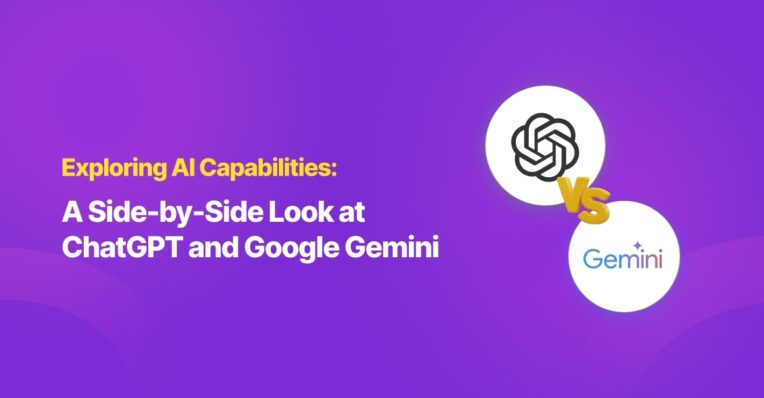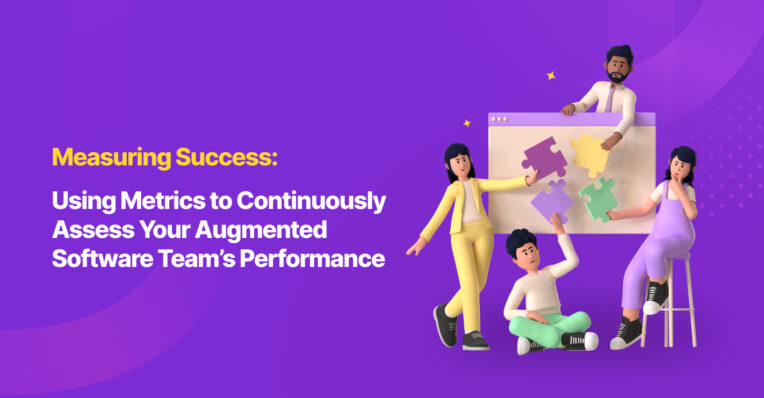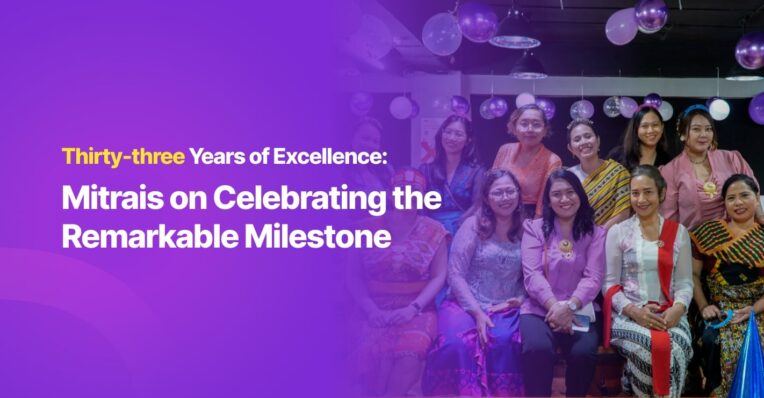Director Message

Welcome to the newest Mitrais Newsletter for 2024.
The newest iterations of Artificial Intelligence tools continue to be a hot topic globally as our industry examines the myriad possible uses that AI can be put to. Two of the leading lights in bringing AI to the market are OpenAI’s ChatGPT, and Google’s Gemini. In this issue, Mitrais’ experts examine how ChatGPT and Gemini compare today, and which is the better choice for your use case. If AI integration is on your radar, we know you will find this comparison interesting and timely.
In every software development, enhancement or maintenance project, one of the key questions is “How can I stay on top of my team’s performance?”. In the first of a series of papers prepared by Mitrais, we introduce one of the most significant concepts in measuring success – the implementation and effective use of team metrics. With more than 30 years of experience in helping our clients produce quality outcomes, we hope you will find our expert analysis of the best practices in this field helpful.
No doubt you are regularly approached by vendors looking to provide software development services, and most of them are relative newcomers to this industry. How often do you find an organisation with decades of experience working together with partners producing quality results? Recently, Mitrais celebrated our 33rd anniversary as a premier software development partner, and we take a moment to look back on this memorable milestone and share our plans for even more to come (and a little about our celebration).
Finally, this month, we take the opportunity to introduce you to Thomas Rizal Trika, Mitrais’ Melbourne-based Business Development Manager. Truly a “global citizen”, Thomas was born in Indonesia and educated in Australia. He brings with him decades of international experience in the software development and consultancy and represents a valuable asset for Mitrais and our clients in Victoria.
As always, we hope you enjoy this quarter’s newsletter, and we wish you all continued health and prosperity.
Exploring AI Capabilities: A Side-by-Side Look at ChatGPT and Google Gemini

This paper explores the advancements in Large Language Models (LLMs) with a focus on two leading platforms: OpenAI’s ChatGPT and Google’s Gemini. LLMs have revolutionised natural language processing (NLP) by enabling machines to understand and generate human-like text, with significant implications across various industries. The paper traces the evolution of LLMs, highlighting the impact of the Transformer architecture and the rise of GPT-based models. It delves into a comparative analysis of ChatGPT and Gemini, examining key aspects such as API accessibility, model deployment, customisation, developer tools, documentation, and integration capabilities. By assessing these platforms, the paper provides insights into their potential applications and how they can be leveraged to create innovative AI-driven solutions.
Large Language Models
Large Language Models (LLMs) represent a significant advancement in artificial intelligence, particularly in the field of natural language processing (NLP). These models are designed to understand and generate human-like text, enabling them to perform a wide range of language-related tasks. The history of LLMs can be traced back to earlier efforts in machine learning and NLP, including rule-based systems and statistical approaches. However, it was the development of deep learning techniques, particularly deep neural networks, which paved the way for the emergence of more sophisticated LLMs.
One of the seminal moments in the history of LLMs was the introduction of the Transformer architecture by Vaswani et al. in 2017. This architecture, which relies on self-attention mechanisms, revolutionised the field of NLP by enabling the training of larger and more powerful language models. Subsequently, researchers began to explore the potential of scaling up these models, leading to the development of increasingly larger LLMs.
The rise of GPT (Generative Pre-trained Transformer) based LLMs, pioneered by OpenAI, marked a significant milestone in the evolution of this technology. GPT models are pre-trained on vast amounts of text data, allowing them to learn the intricacies of language through unsupervised learning. This pre-training is followed by fine-tuning on specific tasks, enabling GPT models to excel in a wide range of applications, including text generation, summarisation, translation, and question answering.
OpenAI’s ChatGPT is one of the prominent examples of GPT-based LLM platforms. It offers users the ability to interact with a conversational agent capable of understanding and generating human-like responses. ChatGPT leverages the power of large-scale pre-training to provide accurate and contextually relevant responses to user queries and prompts.
Another notable LLM platform is Gemini, developed by Google. Gemini builds upon Google’s expertise in NLP and leverages the company’s vast resources to deliver cutting-edge language understanding capabilities. While specific details about Gemini may vary, it likely shares similarities with other GPT-based LLMs in terms of architecture and functionality, offering users access to advanced language processing capabilities for a variety of applications.
Overall, the rise of GPT-based LLMs, including platforms like ChatGPT and Gemini, represents a significant advancement in AI technology, offering powerful tools for understanding and generating human-like text. These platforms have the potential to revolutionise various industries, from customer service and content generation to education and research, by providing access to sophisticated language processing capabilities.
Assessment Scope
In this paper, our primary focus will be on two prominent Large Language Model (LLM) platforms: Chat-GPT and Gemini. Our assessment will centre around aspects crucial for delivering solutions based on LLM technology, emphasising the following key points:
- API Accessibility, we will evaluate the ease of access to the platforms’ APIs.
- Model Deployment, our assessment will delve into the supported deployment for LLM models on both platforms.
- Customisation and Fine-tuning, we will analyse the platforms’ capabilities for customising and fine-tuning LLM models to meet specific application requirements.
- Developer Tools, our evaluation will encompass the suite of developer tools offered by each platform, including data processing, model fine-tuning, and integration with popular development frameworks.
- Documentation and Tutorials, we will assess the comprehensiveness of the documentation and tutorials provided.
- Compatibility and Integration, we will examine the platforms’ compatibility with existing software ecosystems and their ability to seamlessly integrate with other tools and services commonly used in LLM-based solution development.
ChatGPT
ChatGPT, developed by OpenAI, is a versatile platform that offers a range of features tailored to facilitate interaction with AI models for natural language processing tasks. Let’s delve deeper into its aspects:
API Accessibility
ChatGPT provides easy access to its AI models through well-documented APIs, allowing developers to integrate them seamlessly into their applications or services. These APIs are designed to be user-friendly, enabling straightforward interaction with the models. Additionally, OpenAI offers Software Development Kits (SDKs) for various programming languages, further simplifying the integration process.
Official supported SDKs include:
- Python
- js
- Azure OpenAI libraries
Other programming languages are supported by the community such as Java, Go, Rust and others (https://platform.openai.com/docs/libraries).
Model Deployment
Deploying and integrating ChatGPT models into applications or services is straightforward, due to the availability of cloud-hosted APIs provided by OpenAI. These APIs enable developers to access the models remotely, eliminating the need for complex infrastructure setup.
Customisation and Fine-tuning
Developers have the flexibility to customise and fine-tune ChatGPT models for specific use cases or domains. OpenAI supports transfer learning, allowing developers to leverage pre-trained models and fine-tune them on custom datasets to adapt them to their specific requirements. This enables developers to achieve higher performance and accuracy for their particular applications.
Developer Tools
OpenAI provides a comprehensive set of developer tools and utilities to facilitate model development, testing, and debugging. These tools include frameworks and libraries for common tasks such as data preprocessing, model evaluation, and performance optimisation. By offering these resources, OpenAI aims to streamline the development process and empower developers to build robust and efficient AI-powered applications.
Documentation and Tutorials
OpenAI offers extensive documentation covering API usage, model architecture, and best practices for developers. Additionally, they provide tutorials, code samples, and examples to help developers get started quickly and familiarise themselves with the platform. These resources are essential for developers to gain a deeper understanding of ChatGPT and leverage its capabilities effectively.
Compatibility and Integration
ChatGPT models integrate seamlessly with existing development workflows, frameworks, and technologies. OpenAI ensures compatibility with a wide range of programming languages and platforms, allowing developers to leverage ChatGPT in their preferred environment. Whether developers are building web applications, mobile apps, or desktop software, they can easily integrate ChatGPT into their projects without encountering compatibility issues.
Gemini
Gemini developed by Google, is a suite of generative AI models that powers Google’s digital products and services, including the Bard chatbot, and is capable of multilingualism and multimodal dialogue. Let us explore its facets in more detail:
API Accessibility
With its comprehensive training and documentation, the Gemini API makes it easy for developers to link their applications with their model. Moreover, we can use the Gemini API with any SDK that we want to use, including Web, Dart (Flutter), Android, Python, Go, Node.js, and REST API. The Gemini API can only be accessed with an API Key, which may be acquired via Google AI Studio.
Model Deployment
Gemini models have managed APIs and can accept prompts without deployment. Other models require deployment to an endpoint. Two types are tuned models and models without managed APIs. Vertex AI associates compute resources and a URI with the model when deployed to an endpoint.
Customisation and Fine-Tuning
Vertex AI enables developers to fine-tune the Gemini Model for specific use cases and unique tasks, while also ensuring it adheres to output requirements when instructions are insufficient. Gemini supports the supervised tuning which shall improve the performance and enables the model to learn additional parameters to achieve the desired tasks or behaviours.
Developer Tools
After Gemini, Google’s innovative journey continues with new technologies that are advancing AI to previously unheard-of heights. Among the noteworthy additions to their toolkit are:
- Vertex AI Studio – A cloud-based generative AI development platform that allows developers to create and experiment with GenAI models.
- Google AI Studio – A web-based application that allow us to run prompt directly in the browser, experience and get started with Gemini API.
The development process can be streamlined, and the developer given the ability to create reliable AI-powered applications by using the tools mentioned above for model development, testing, evaluation, debugging, and performance optimisation.
Documentation and Tutorials
Google, with its focus on documentation, might provide more comprehensive and up-to-date official guides in the future. However, Since Gemini AI is newer, there are fewer user-created resources and tutorials available online compared to Chat GPT. Tutorials for Gemini AI might be more structured and targeted, particularly if the platform is aimed at serving specific business or industry needs. This could include webinar sessions, live demos, and specialised training modules for enterprise clients.
Compatibility and Integration
Gemini AI is still in development and does not yet provide generally simple integration with a wide range of platforms or applications. Nonetheless, Gemini’s Software Development Kits (SDK) support several programming languages.
Furthermore, Gemini AI may eventually integrate seamlessly with Google services and products. This could apply to other Google Workspace apps, Google Assistant, or Google Search.
Gemini vs OpenAI
Below is the comparison summary of Chat-GPT and Gemini.
| Aspect | Chat GPT | Gemini |
| API Accessibility | Python, Node.js, others (supported by the community) | Web, Dart (Flutter), Android, Python, Go, Node.js, and REST API (supported by Google) |
| Model Deployment | Cloud SAAS | Cloud SAAS |
| Customisation Fine-tuning | Supported model: gpt-3.5-turbo, babbage, davinci, gpt-4 | Supported model: Gemini, Imagen2, Gemma, Chirp |
| Developer Tools | Provides SDK for data preprocessing, model evaluation, and performance optimisation | Provide SDK for Prompt, Model Tuning, Model Evaluation and Cloud based Development Tool |
| Documentation and Tutorial | API usage, model architecture, and best practices. | API Usage, model architecture, webinar, Blog and Vlog |
| Compatibility and Integration | SDK for different programming language, REST API and Azure | SDK for different programming language, Web, REST API |
Conclusion
The development of Large Language Models (LLMs) like ChatGPT and Gemini marks a transformative leap in artificial intelligence, particularly within the realm of natural language processing. Both platforms, despite their unique strengths and focus areas, underscore the profound impact of LLMs on various industries by enabling sophisticated language understanding and generation capabilities.
ChatGPT, with its mature ecosystem, offers robust API accessibility, extensive developer tools, and seamless integration capabilities, making it a versatile choice for a wide range of applications. Its emphasis on ease of use and comprehensive documentation further enhances its appeal to developers and enterprises alike.
Gemini, on the other hand, represents Google’s strategic foray into the LLM landscape, bringing with it the potential for deep integration within Google’s ecosystem. While still developing, Gemini offers advanced customisation and fine-tuning capabilities, especially within the Vertex AI framework. Its future potential lies in its ability to leverage Google’s vast resources and existing digital infrastructure, which could lead to more specialised and enterprise-focused applications.
As these platforms continue to evolve, the choice between them will depend on specific use cases, deployment needs, and integration requirements. ChatGPT models currently offer more mature integration options, seamlessly fitting into existing development workflows, frameworks, and technologies. OpenAI ensures compatibility with a wide range of programming languages and platforms, allowing developers to easily incorporate ChatGPT into web applications, mobile apps, or desktop software without compatibility issues. On the other hand, while Gemini AI is still in development and doesn’t yet provide simple integration across a wide range of platforms, its Software Development Kits (SDK) do support several programming languages. Furthermore, Gemini AI may eventually integrate seamlessly with Google services and products, potentially extending to other Google Workspace apps, Google Assistant, or Google Search. Both ChatGPT and Gemini exemplify the ongoing advancements in LLM technology, offering powerful tools that are poised to redefine how we interact with and leverage artificial intelligence in the years to come.
References:
Measuring Success: Using Metrics to Continuously Assess Your Augmented Software Team’s Performance

Introduction
Over the last few decades, the idea of augmenting your software development team’s capacity and capabilities using remote team members from a trusted near-shore provider has become normalised. More and more organisations use this strategy to provide them with a cost-effective method of supplementing their internal software development “horsepower” to create and maintain key applications, whether it be for their internal use (gaining a competitive advantage) or taking their solutions to market.
Mitrais has been providing just such team augmentation services for over 30 years, working with many well-known organisations. Some of these have been working in this mode, with blended teams comprising local and remote team members completely integrated, for decades.
What is clear is that highly experienced development managers within these partner organisations have some common traits. One of the most critical is the realisation that successfully executing this strategy requires careful planning and monitoring. There is no doubt that managing an outsourced or blended development team to a high level of performance requires more than just “gut feel”. Fortunately, there are a wide range of metrics available that allow team managers to get a continuously updated picture of their team’s performance.
In this series of articles, we will look in detail at a range of metrics that can be used to measure the success of your team over time. It is important to understand that software development is far from a “one size fits all” exercise. Naturally, development processes and policies vary from organisation to organisation, so there is no “magic bullet” combination that is appropriate for every case. The right mix will be one that serves the needs of your organisation and your management, and are tools for understanding and improving outcomes specific to you. But by looking at the most common measures used throughout the software industry, we hope that your decision regarding which to prioritise will be an easier one.
Importance of Choosing the Right Metrics
Selecting the right metrics to gauge the success of a development team is like selecting the right instruments for a scientific experiment. Just as the right instruments give you access to accurate and reliable information in an experiment, well-chosen metrics can offer informative insights into your augmented team’s performance, efficiency and productivity. The right metrics can allow you to see where your team is succeeding, and where improvements can be made, all before issues arise.
The suite of metrics you choose can act as a compass for you in navigating the complexities of software project management, ensure your team remains aligned with your project goals, and foster an environment of continuous improvement.
The appropriateness of each metric can, however, vary significantly depending on the nature and phase of your project. For instance, the Feature Delivery Rate may be a pertinent measure for a greenfield or enhancement project, where the focus is on rolling out new features. However, it may not hold the same relevance for a project in the maintenance phase, where the emphasis shifts towards stability and issue resolution.
You can see that this underlines the importance of selecting metrics that reflect the current priorities of your individual project, and even consider altering the mix at different stages of development to suit. Knowing that the right metrics mix can be somewhat dynamic, it’s a delicate balancing act. It is vital to choose metrics that reflect your current needs and that serve your unique project scenario TODAY, and avoid the trap of relying on generic “one size fits all” indicators.
Also, it is imperative to be clear that metrics are tools to aid your understanding to improve TEAM performance and processes, rather than definitive indicators of an individual’s performance within it. Team metrics should inform and guide, rather be used to judge or label. Using a balance of quantitative and qualitative factors is essential for an accurate assessment of team productivity. By doing so, you not only measure what matters, but also cultivate a team environment that values growth, learning, and continuous improvement.
Individual metrics can sometimes only reveal their significance when read in combination with others, so over-reliance on just one or two can lead to misinterpretation. A perfect example might be Technical Debt. While important to performance and stability, Technical Debt must be considered in conjunction with other metrics like Bug Rate and Code Compliance to fully understand it’s significance. Again, the selection of the right metrics suite is critical.
Indicative Metrics
In subsequent papers in this series we will do a deeper dive into the most used metrics and their pros and cons, but in general software development metrics can grouped into several discrete classes based on what they intend to measure.
Briefly, development metrics can be classified as:
- Code Quality
- Bug Rate: Crucial for product reliability and measured by tracking the number of bugs per unit of code over time.
- Technical Debt: Significant to development speed and stability but must be considered in conjunction with other metrics (as previously stated).
- Code Coverage: Important in assessing test effectiveness and measures the percentage of code actually executed during testing.
- Static Code Analysis: Essential for early detection of potential vulnerabilities and issues.
- Coding Standards Compliance: Ensues uniformity and readability which is vital for maintenance.
- Code Complexity: Sometimes referred to as Cyclomatic Complexity, directly impacts code maintainability.
- Code Review Coverage: Vital for Quality Assurance and Knowledge Sharing, measures the percentage of changes reviewed before integration.
- Code Churn: Important, since it reflects the stability and maturity of code. Measures the changes to the codebase over time.
- Productivity
- Velocity: A metric specific to Agile (SCRUM) methodologies. Measures the amount of work that a team can handle in a single sprint, and directly impacts delivery timelines.
- Throughput: Used in KANBAN and other flow-based Agile methodologies, measures the number of team tasks completed during a period.
- Bug Fix Rate: Important for maintaining product quality. Measures the number of bugs resolved in a period.
- Feature Delivery Rate: Vital to team management and product owners and can impact customer satisfaction and competitive advantage. Measures the number of features deployed in a period.
- Automated Test Pass Rate: Reflects the health of the codebase. High pass rates can correlate with higher productivity, but should be analysed alongside other Code Quality metrics.
- Commit Frequency: Indicates developer activity by measuring code commits in a period. Impacted by the complexity of tasks assigned, and does not necessarily correlate with quality or value. Analyse alongside other metrics.
- Team Turnover Rate: A reflection of the health and stability of the team. Measures the rate at which team members leave the team and are replaced. High turnover can be associated with lower productivity.
- Net Promoter Score: A simple measure used to gauge satisfaction and enthusiasm for the teams performance from key stakeholders.
- Burn Down/Up Charts: A useful visualisation tool for monitoring project conduct.
- Team Member Satisfaction Rate: A less-used metric, but evidence does suggest that team satisfaction strongly correlates with team productivity.
- Innovation and Problem Solving
- Problem Resolution Time: Critical for maintaining project momentum. Measured by the time taken to resolve issues from identification to closure.
- Number of New Ideas Submitted: Indicates innovative thinking within the team, but relies on ideas being appropriate and adopted. (See Number of Successful Innovations/Ideas)
- Number of Successful Innovations/Ideas: A good indicator of level of creativity within a development team. Measures the number of successfully implemented new ideas that contribute to the project’s (or client’s) goals.
How to Use Metrics Effectively
In general terms, there are two major takeaways regarding the implementation of a metrics suite on your software development project.
Firstly, while metrics are certainly a powerful toolset, it is vital to remember that Context Is King! If some metrics seem to indicate variations from what you expect of your team, they should represent the starting point of your investigation into the root causes of the variations, not the end point. It is not uncommon for individual measures metrics to diverge during the course of a project’s execution, and the divergence can have many possible causes. If one metric indicates an issue while others do not, consider what that means. Try not to get fixated on one particular number; consider the “big picture” of your overall team performance, and think about what the outlier result is really telling you.
Secondly, understand the correlation that the metrics you are measuring in your suite have with the goals of your project and organisation. Ideally, each metric within your suite has a very tight relationship with one or more of your overall goals, and provides you with timely and targeted insights into how your team is delivering on them. Metrics never represent all the answers; they should suggest places where you can find improvements. If they aren’t doing that, consider revisiting items that you are measuring to align them better with your desired outcomes.
Conclusion
Software Development Project success comes as a result of a myriad of elements, and effective performance tracking is one important element. Focussing on the right metrics as part of that performance tracking not only gives you an objective way to assess the performance of your augmented team, but should also help you provide an environment that fosters sustained success and continuous improvement.
The goal of a metrics suite goes well beyond simply measuring and reporting numbers. It is to provide you with a way to understand how your team performs under different circumstances, to engage with the team on how to optimise results, and to evolve the team composition, processes and management to achieve high performance.
Those who have been successfully managing augmented teams for years are proof that guiding your project with the aid of the right metrics suite represents a key element in long-term achievement and positive outcomes.
Watch for the next article in this series which will go deeper into the Code Quality Metrics, examining their significance and utility in more detail. Following that, there will be further articles covering Productivity and Innovation Metrics, and some Case Studies showing how clients have implemented complete metrics suites.
Celebrating 33 Years of Excellence: Mitrais Marks a Remarkable Journey!

It’s been an incredible journey, and here we are—celebrating 33 years of innovation, teamwork, and growth! For us at Mitrais, this anniversary is not just about marking another year; it’s about honoring the path we’ve walked together, the milestones we’ve achieved, and the future we’re excited to build alongside our clients. Our success has always been tied to the success of the businesses we partner with, and we take pride in our continuous commitment to helping them innovate, grow, and reach their goals. This year, we proudly celebrated with the theme “Indonesia Berkain,” or Indonesian Clothing a beautiful recognition of our roots and the vibrant culture that shapes us. It’s a celebration of solidarity, harmony, and the shared values that connect us as a team and with our clients.
Reflecting on 33 Years of Growth and Achievements
Over the past three decades, Mitrais has transformed from a small start-up into a leader in the software development world. We’ve hit some amazing milestones along the way—one of the most recent being our ISO 27001:2022 certification for our Software Development Services. This certification highlights our commitment to maintaining the highest standards of Information security, cybersecurity and privacy protection – crucial elements in today’s digital age.
Throughout our history, Mitrais has been dedicated to helping our clients achieve their business goals through innovative software solutions. From pioneering new technologies to delivering tailored solutions, we’ve supported our clients every step of the way, driving both innovation and value. Our clients’ successes are our greatest achievements, and nothing makes us prouder than seeing the meaningful outcomes we help create.
Commitment to Future Growth and Excellence
Today, our commitment to innovation and excellence remains as strong as ever. At Mitrais, we’re all about pushing boundaries, exploring new ideas, and staying ahead of the curve. As we all know, the future holds many opportunities, and we are eager to explore new technologies and strategies that will allow us to deliver even greater value.
Our vision is to maintain our position as a trusted partner in software development, delivering the best software solutions while staying true to our core values of integrity, collaboration, and client satisfaction. We are committed to building Long Term, High Trust relationships with our clients, while preserving an environment of growth and learning, ensuring that our team remains at the forefront of technological advancements and industry trends.
Celebrations Across Offices
To mark this significant milestone, we celebrated across all four of our offices in Bali, Yogyakarta, Jakarta, and Bandung. Each office was filled with a festive spirit, bringing together our teams in a joyous celebration of our shared success.
The celebration began with inspiring messages from our leaders, including President Director Ibu Wiwie Harris. “Anniversaries are the opportunity to recollect memories, our successes, as well as failures. Anniversaries are also an opportunity to raise a toast to our employees and ex-employees who have made our Mitrais what we are today. Let’s continue to excel and thrive” she said. Following her remarks, Director of Software Development Pak Gusti Putu Kompiang delivered his speech live from the Bali office, highlighting a brief history of the company and appreciation for the shared efforts that have resulted in Mitrais today growing six-fold since its establishment. He reiterated our commitment to embrace new technologies, explore new markets, and strive for greater success in the future. Their words served as a powerful tribute to the dedication that has been the foundation of Mitrais’ growth. It was a wonderful moment of reflection and motivation for the journey ahead.
Team-Building Activities and Bringing Festivities
The celebrations were not just about speeches and reflection; they were also about fun, engagement, and team spirit. We organised a variety of team-building activities designed to nurture camaraderie and strengthen bonds among our staff. The Speed Networking, The Wiggle Hoop Relay, and The Great Office Hunt, were just a few of the games that brought out the competitive spirit in everyone, with prizes awarded to the winning teams.
Adding to the festive moment, was a mini fashion show featuring traditional Indonesian costumes, perfectly capturing the “Indonesia Berkain” theme. From beautiful batik to vibrant sarongs, our team members showed off their style and cultural pride, adding to the lively atmosphere. We also held a social media competition and a door prize event, keeping the excitement going all day long.
A Moment to Remember
As we celebrate 33 years of Mitrais, we are reminded of the strength of our team, the trust of our clients, and the partnerships we’ve built. This milestone is not just a reflection of our past achievements but also a steppingstone towards future growth and innovation. We extend our deepest gratitude to our employees, clients, and partners for their continuous support and commitment. Here’s to many more years of success, innovation, and growth!
Driving Growth in Victoria - Thomas Rizal Trika

This time we introduce Thomas Rizal Trika, our Melbourne-based Business Development Manager.
Born in Bandung, Indonesia and growing up in Jakarta, Thomas was educated at the prestigious De La Salle College in Malvern, Victoria. He subsequently went on to graduate with a degree in Business Information System from RMIT University.
Relocating permanently to Melbourne in 2012 with his wife and children, Thomas has gone on to a varied and impressive career including high level technical support management, project management, technical training and business development roles for some renown organisations, both Australian and Indonesian. This included establishing his own business developing technical solutions for enterprise-level clients. But his commitment to personal development continues, having also achieved certification in Cyber Security.
Of course, there’s more to Thomas than just education and work. Being a resident of Melbourne, he is immersed in the local culture. He appreciates good coffee (Melbourne is famous for its coffee culture, after all), and enjoys cuisine, cooking, reading, listening to music, volunteering, and playing video games when he has time.
In February 2024, Thomas was approached regarding a Business Development Management role in Victoria which seemed like a very good fit. But the details of the potential employer were not immediately clear to him. “I wasn’t aware it was Mitrais when initially approached” he says. “But once I found out, it was an easy decision. My meetings with Mitrais management only reinforced my choice, and I was further impressed by the team’s work ethics”. Now Thomas is operating as Business Development Manager at Mitrais tasked to looking after the Victorian market along with three other BDMs each covering different Australian territories.
What was it that he found most attractive about joining the Mitrais team? “What I love about Mitrais is its amazing people and culture. It’s a professional yet family-like environment where everyone is so kind. The long-term commitment of employees is a testament to the company’s positive atmosphere” he says.
Thomas retains his passion and ambition around helping grow teams and businesses, and it is always important to consider how the processes and values of your employer align with your personal values to maximise the fit. So, how has he found that so far? “Mitrais’ emphasis on long-term, high-trust relationships aligns with my personal values. This culture of collaboration, open communication, and mutual respect enables me to build strong connections, learn from others, and deliver greater value to our clients. Mitrais is a very mature company, and we need to remain open to reinventing ourselves to fit the market, which is never static. However, our core values and commitment to long-term relationships will remain the foundation upon which we adapt and evolve”.
In Thomas, Mitrais has found a capable and motivated team member who we can be sure represents the best of what we offer to Australian partners.


